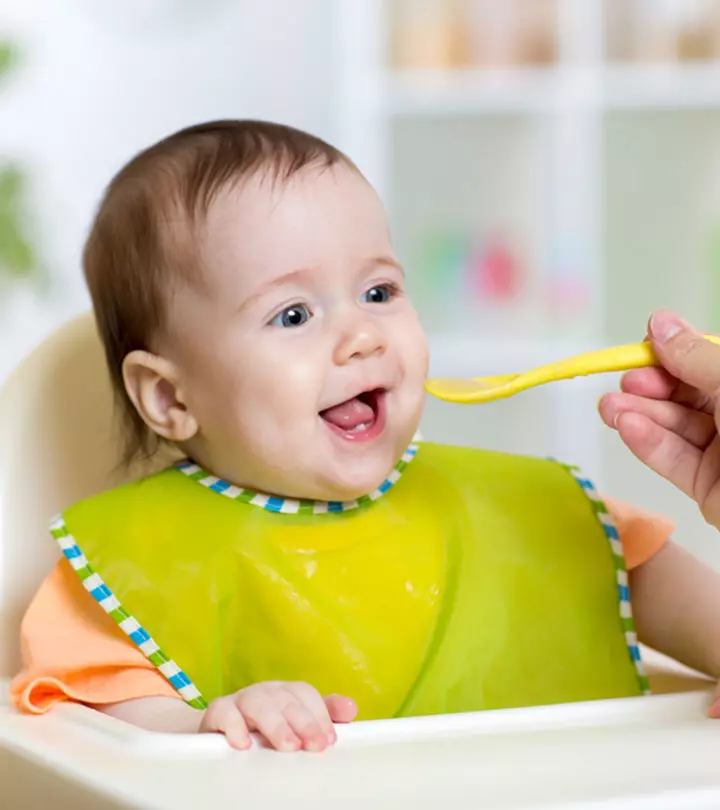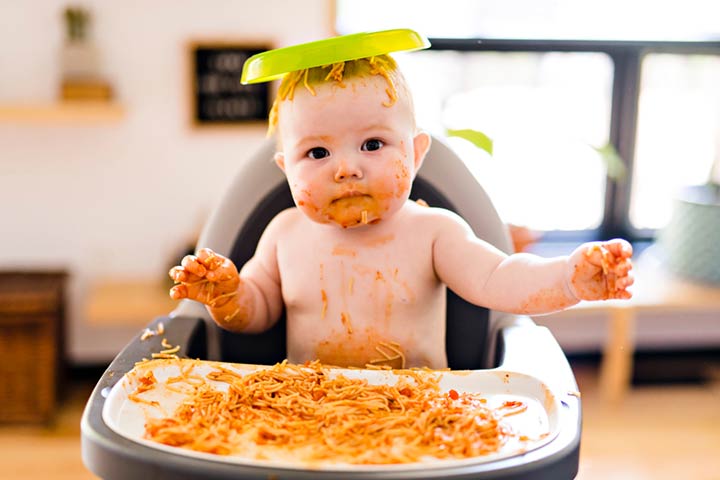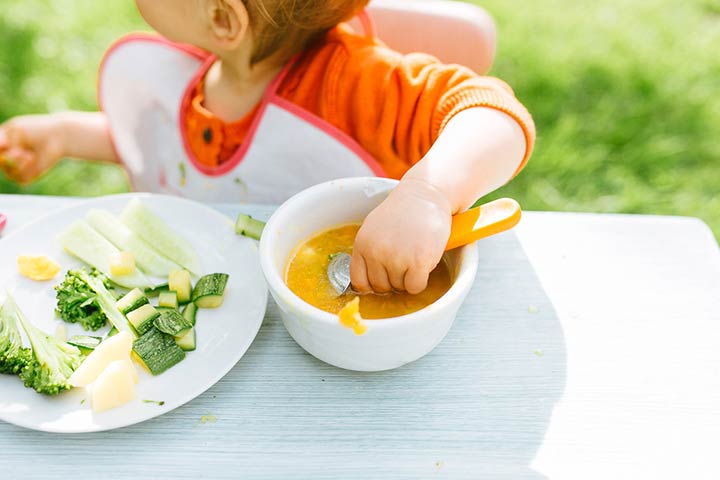
Image: Shutterstock
When it comes to feeding your baby, everything gets a little trickier. Some babies are picky from birth and can make switching to solid food an ordeal, while others take to it without any fuss. Whatever the case may be, introducing solid food to your little one is a huge transition that will require time and patience. The rules of this process have changed drastically over the years, so going to your peers or older relatives probably won’t help as much as you thought it would. Figuring out what to offer your baby and how to do it comes with experience, but there are some myths you should do away with. Due to all the mystery surrounding baby food, people tend to make their own assumptions. Giving into them may do more harm than good.
Here are 5 baby food myths you shouldn’t fall prey to:
1. Myth: If Your Baby Is Looking At Your Food Or Trying To Touch Your Food They Are Ready For Solid Food
Image: Shutterstock
No, just no. Babies reach for a number of different things. Including every toy or stray piece of fabric they see. That doesn’t mean that they’re ready to start solid food more than it means they want to start sampling your wardrobe. Babies are simply fascinated by the world and one way they experience it is through taste. That doesn’t mean they should taste whatever you’re eating. Looking longingly at your plate is just one of the signs that your baby might want to try something other than breastmilk. They need to show a genuine interest in the food. They need to be able to sit up and keep their head up on their own in order to be able to coordinate and chew. This is why it is recommended to wait until your baby is 6 months old to start introducing solid foods into their daily diet, alongside breastmilk or formula.
2. Myth: There Is One Correct Food To Give Your Baby First
Image: Shutterstock
Giving your baby spaghetti for their first meal probably isn’t the best choice but that doesn’t mean that you need to stick to one type of food in particular. There are two main reasons to start your baby on solid food: to develop their oral motor skills in preparation for eating solid food, and to boost their iron intake (1). The type of food you give your baby is irrelevant as long as it contains iron. You can even give them a small serving of slightly mashed or ground meat for extra protein or beans and lentils. You don’t need to limit your options to rice either. Try iron fortified baby cereal for your little one. It’s okay to give them a good mix of different foods.
3. Myth: You Must Start With Thin Purees
Image: Shutterstock
There is no need to wear out your blender trying to make your food as watery or mushy as possible when your little one starts to eat solid food. Especially if they are 6 months and above. At this age your baby already has the ability to munch or chew on food even without teeth. How cool is that! You can offer your baby purees but give them a chance to practice noshing on their own. In fact, offering soft finger foods is a great way to let them practice while encouraging self feeding which helps promote oral motor development (2). This will allow your baby to take control over how much they eat and the pace at which they eat. This will help with self-regulation of food later on.
4. Myth: Make Sure To Start With Bland Food
Image: Shutterstock
Bring on the flavor! Flavor is a good thing for your baby. It’s important that your baby be introduced to a wide variety of flavors and textures by the time they reach 9 months so that they are not fussy about food later on. It increases their chance of being more adventurous eaters instead of being selective and picky. As long as you stay away from added sugars and too much salt, your baby is ready for some spices!
5. Myth: Delay Peanut Intake To Prevent Allergy Development
This is a common misconception. In reality introducing peanuts as soon as possible decreases the chances of a peanut allergy developing. However, don’t let your baby have at a whole nut as it is a choking hazard. Instead mix a spoon of peanut butter into a small bowl of yogurt or mashed fruit and let them enjoy!
Figuring out what and how to switch your baby over to solid foods is not an easy process. It will take trial and terror and a lot of practice. But don’t worry, you and your baby will get there. In the meantime, have fun seeing your baby enjoy new foods and don’t fall prey to these age-old myths. Happy parenting!
















